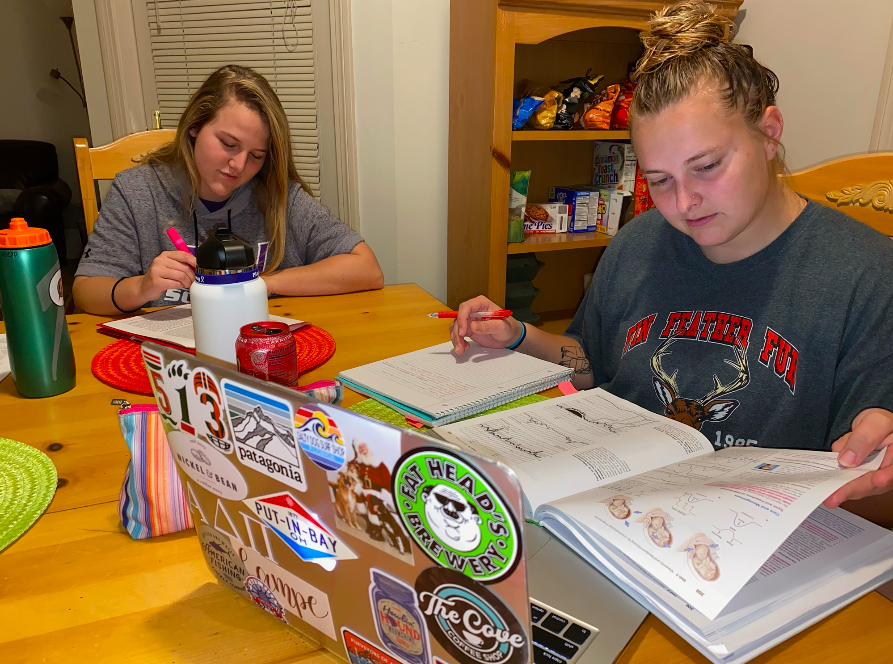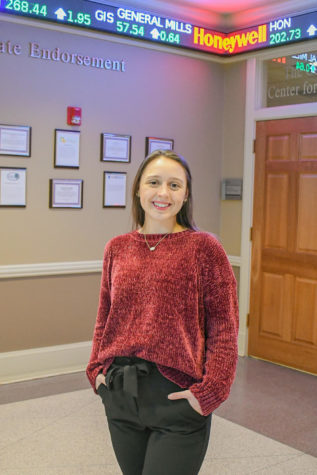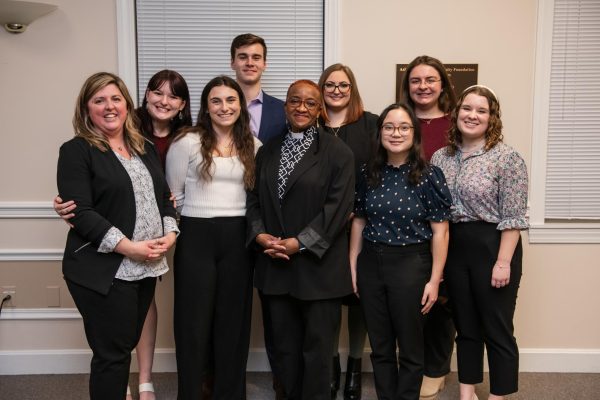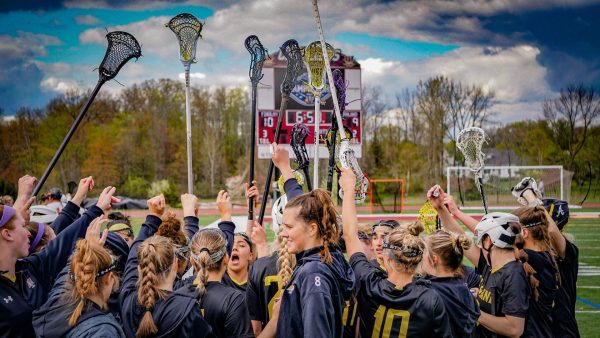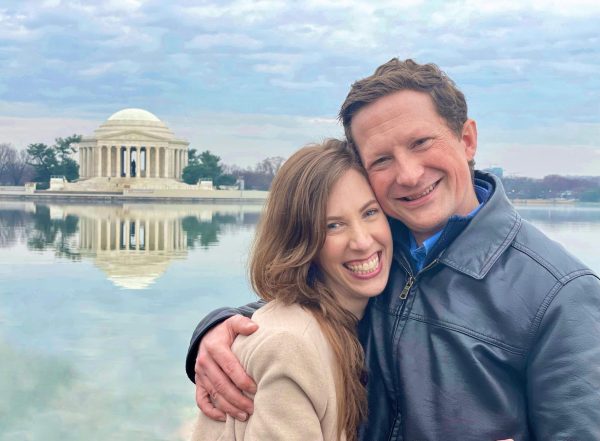Ashland University makes it through the first half of the semester
October 19, 2020
As Ashland University faculty, staff and students reach the halfway point of this unique fall semester, some might be surprised by the fact that campus has remained lively.
The uncertainties of the coronavirus pandemic did not make the semester easy to predict.
Nonetheless, students have been able to stay on campus and attend classes in-person if their chosen programs allowed them.
Daniel McDonald, associate professor of art and faculty senate president, talked with many faculty members who presumed students would not be on campus longer than a week or two.
“I have to assume those faculty are a little surprised,” he said.
McDonald, on the other hand, felt confident that in-person learning would still be a possibility seven weeks into the semester.
“I think we’re going to be fine,” he said. “As long as there’s a relatively steady trickle of these moments we will probably all just bear with it as it moves through the semester.”
So far, the hardest part of this semester for McDonald has been the disconnect he feels from students.
“It’s difficult to feel like we’re investing what we need to because things just aren’t normal,” he said.
As a professor who frequently met with students to walk across campus or grab coffee, McDonald battles with this absence of communication.
“Those things all feel a little off limits,” he said. “Figuring out if we are meeting the needs of students is so much harder in this environment.”
With students in and out of quarantine or isolation, faculty have had to make adjustments on the fly.
“Just the other day I had to make a decision about a project purely based on the fact that I have a couple students in quarantine,” he said. “It would be difficult to get the materials needed for those students, so I have to come up with a different project that can let them use materials they have on hand.”
Faculty, like McDonald, have also had to deal with students being at different stages in the coursework.
As a result, they must figure out how to work individually with students in quarantine or isolation while keeping the rest of the class up to speed, without getting too far ahead.
“Where we used to have maybe one student out at a time, we might have five or six now and they’re all in slightly different situations,” he said. “Faculty members are essentially teaching five classes in one and trying to juggle that.”
In addition, there is still the possibility that classes become switched to a fully virtual format.
“Then of course the fear that it could all shut down at any moment,” McDonald said. “So trying to make it feel as normal as possible while also knowing that this complete shift is always on the horizon.”
McDonald also worries about his own health and safety amidst COVID, sometimes overanalyzing how he feels, wondering if he has a symptom.
“I think it’s very difficult because COVID symptoms can be any symptom any of us have ever felt at any given time,” he said. “The list is endless.”
When students do not wear their masks properly in class, McDonald finds it easy to get anxious.
“The last thing I want to do is have a fight with someone about whether or not they have their mask over their nose,” he said.
Due to the circumstances, McDonald’s study abroad trip that he has been planning for two years was cancelled.
He feels that not being able to provide study abroad trips takes away from the experience of many AU students.
“I think we would be naive in thinking that we’re able to provide everything that we would want to provide,” he said. “That’s difficult from an educator’s view.”
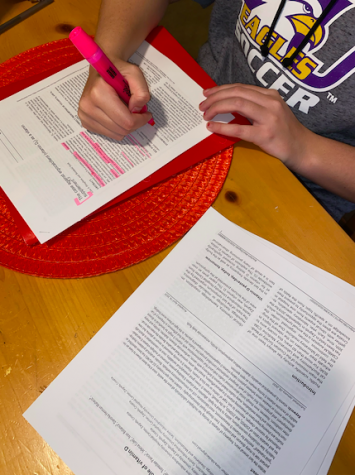
Senior nursing major, Amy St. John, believes the quality of education is still good but wishes she could have more conversation time with professors in person.
“We only get to meet with them once a week and they go over questions in the slides that we’ve done so far,” she said.
In an emotional sense, St. John has struggled with not being able to see all her friends in a big group.
“It is my senior year and so I feel like there were a lot of expectations moving forward and coming into that,” she said. “Especially in fraternity and sorority life, not getting to go to chapter meetings, recruitment, semi and things like that, it’s been a little tough.”
St. John is very surprised that students have been able to remain on campus as long as they have.
“I thought we’d be here a couple weeks max honestly,” she said. “I wasn’t sure college kids could listen to guidelines as well as they have.”
The reason St. John feels students are still on campus is because of the desire they have to be here.
“They’ve spent their whole summer at home and the ones that are here are happy to be,” she said. “They don’t want to get sent home.”
AU President Carlos Campo, is grateful that everyone is still on campus at this point in the semester.
“Maybe a week or so ago, we saw half a dozen students spike up quickly and the county went to red for the first time,” he said. “We knew that things could easily go a different manner and those six students could become 60 pretty quickly but it didn’t happen.”
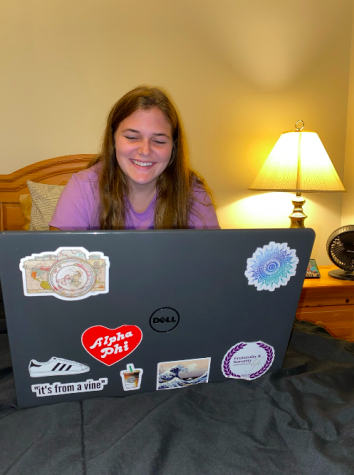
With strong contact tracing, isolation and quarantine regulations set in place, Campo believes the university has done a good job mitigating the spread of COVID.
“We haven’t had groups off campus having large gatherings and I think mask wearing has been uniformly well-accepted,” he said. “I’m very proud of our faculty, staff and students.”
Campo does, however, wish the university had the capacity to test five to 10% of the student body each week.
“I think that our overall inability to test more students probably has led to students who are carriers that we just haven’t identified to pass on the virus,” he said.
As for Campo’s overall thoughts and feelings on the first half of the semester, he is pleasantly surprised.
Retention rate is up from last year, the university has administered honest conversations surrounding racial injustice and the severity of COVID and mental health resources have been expanded upon with the addition of another counselor on campus, Campo said.
“While of course there are great disappointments and difficulties associated with the pandemic we’ve also seen some really encouraging things,” he said.
As the semester began to unfold, some rules changed, particularly that of the warning system being switched to an immediate sanction for not wearing masks.
“We definitely had to get a little bit more serious about enforcement,” Campo said.
Attributed to fatigue and complacency, Campo believes that students are getting tired of wearing a mask, being separated from friends and not getting to see loved ones.
“I really do get concerned about where students are from a mental health perspective,” he said. “I worry about the isolation they’re feeling and them losing loved ones and how it’ll impact their academic goals.”
Nevertheless, Campo sees the trajectory going in the right direction when it comes to remaining on campus.
“I’m confident that we’ll get through this semester,” he said. “We’ll get to Thanksgiving and be able to stay together, that’s how I feel right now.”
Campo has a deep appreciation for the people on campus who have had to make sacrifices this semester.
“To say that people are risking their lives to teach students may sound like an overstatement but it’s really not,” he said. “And when I think about the way our staff has disinfected surfaces day and night for weeks and weeks on end, it’s pretty inspiring.”
Although the semester is not over, the rest of it looks bright for all who walk this campus.
“I’ve just been so impressed by the way Ashland has responded to this, so thank you,” Campo said. “There are heroes on our campus and they’ve done a phenomenal job.”


